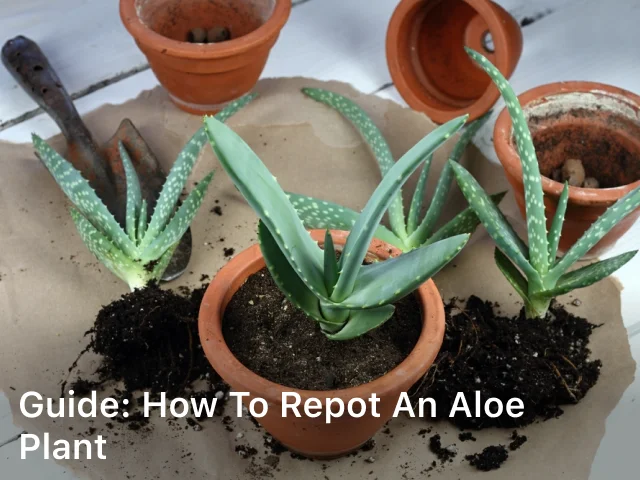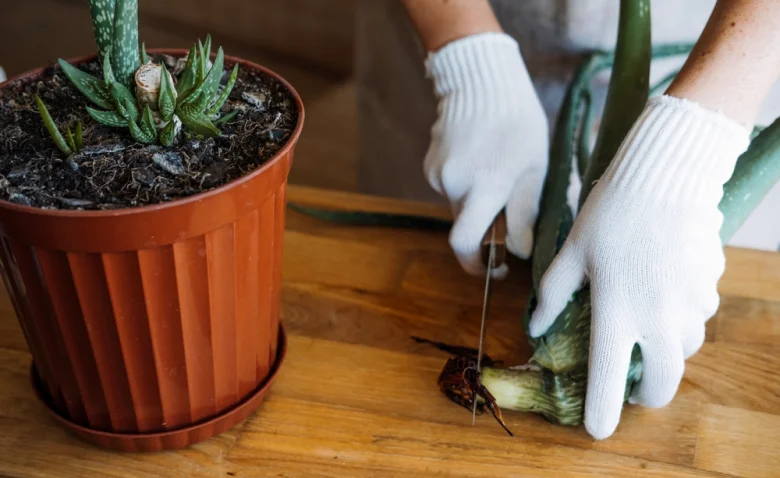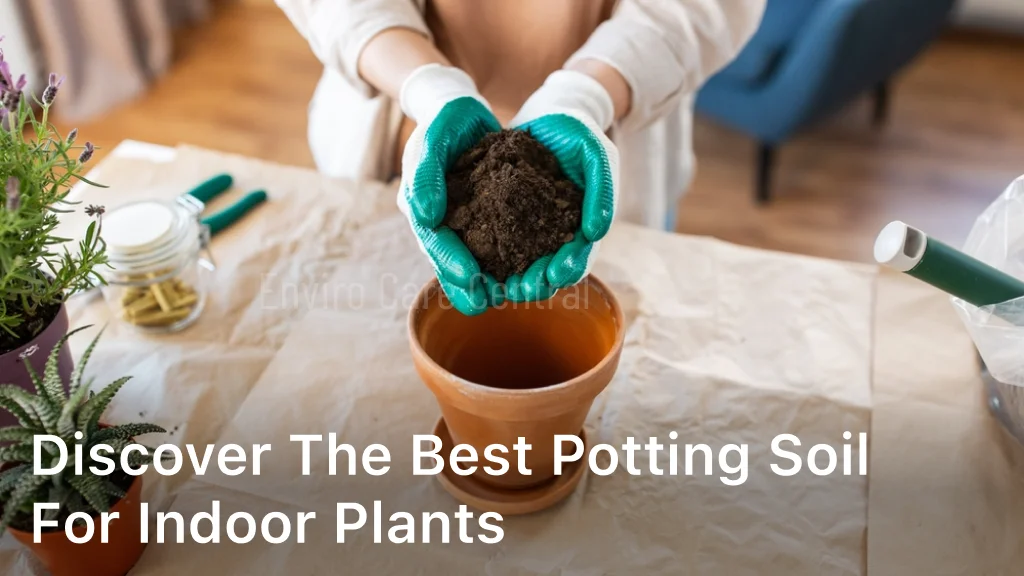Guide: How to Repot an Aloe Plant

Guide: How to Repot an Aloe Plant – Learn how to repot an aloe plant successfully with expert tips and step-by-step instructions. Discover the secrets to a healthy and thriving aloe plant.
Aloe plants are renowned for their unique beauty and exceptional healing properties. Repotting your aloe plant might seem like a daunting task, but it’s essential for its growth and well-being.
In this comprehensive guide, we will walk you through the process of repotting your aloe plant successfully. Whether you’re a novice gardener or an experienced plant enthusiast, our expert tips and insights will ensure your aloe plant thrives in its new home.
How to Repot an Aloe Plant
Repotting an aloe plant can be broken down into several easy-to-follow steps. Here’s a detailed guide to ensure your aloe plant transplant goes smoothly.
Step 1: Gather Your Supplies
Before you begin, gather the following supplies:
- Aloe plant
- A larger pot with drainage holes
- Fresh cactus or succulent potting mix
- A trowel or scoop
- Gloves (optional but recommended)
Step 2: Choose the Right Time
The best time to repot your aloe plant is during its active growth phase, typically in the spring or early summer. This allows the plant to recover quickly.
Step 3: Prepare the New Pot
Select a new pot that is 1-2 inches larger in diameter than the current one. Ensure it has proper drainage to prevent overwatering. Fill the bottom with a layer of potting mix.
Step 4: Remove the Aloe Plant
Gently remove the aloe plant from its current pot. If it’s stubborn, tap the sides of the pot or use a trowel to loosen the soil. Be careful not to damage the roots.
Step 5: Shake off Excess Soil
Shake off the old soil from the roots, allowing them to breathe. Inspect the roots for any signs of rot or damage. Trim away any unhealthy roots with clean, sharp scissors.
Step 6: Repot the Aloe
Place the aloe plant in the center of the new pot. Fill the remaining space with fresh potting mix, ensuring the plant is at the same depth as before. Gently pat down the soil to secure the plant.
Step 7: Water Sparingly
Water the newly repotted aloe sparingly. Overwatering can lead to root rot. Allow the soil to dry out between watering sessions.
Step 8: Place in Indirect Sunlight
Put your aloe plant in a location with bright, indirect sunlight. Aloe plants thrive in such conditions.
Step 9: Monitor and Care
Continue to care for your aloe plant by providing adequate sunlight and watering it only when needed. Over time, you’ll see your plant flourish in its new home.
How to repot an aloe plant in the ground
Repotting an aloe plant into the ground is a straightforward process. Here are the steps to follow:
Materials You’ll Need
- Aloe plant
- Shovel or garden trowel
- New planting location in the ground
- Well-draining soil (preferably sandy or cactus mix)
- Compost (optional)
- Water
- Mulch (optional)
Steps
- Choose a Suitable Location: Select a planting location in your garden that receives plenty of sunlight. Aloe plants thrive in well-draining soil and prefer full to partial sun.
- Prepare the Hole: Dig a hole in the ground that is slightly larger than the root ball of your aloe plant. The hole should be deep enough to accommodate the root system comfortably. Ensure that the top of the root ball is level with the surrounding soil when placed in the hole.
- Amend the Soil: If your garden soil is heavy and doesn’t drain well, consider amending it with sand or a cactus/succulent potting mix to improve drainage. You can also mix in some compost to enrich the soil with nutrients. Aloe plants prefer slightly acidic to neutral soil.
- Remove the Aloe Plant from Its Pot: Gently remove the aloe plant from its current pot, taking care not to damage the roots. If the plant is root-bound, you can gently loosen the roots with your fingers.
- Place the Aloe in the Hole: Position the aloe plant in the center of the prepared hole, ensuring that it sits at the same depth it was in its original pot. Fill in the hole with soil, tamping it down gently to secure the plant in place.
- Water Thoroughly: After planting, water the aloe plant thoroughly. This helps settle the soil and ensures good root-to-soil contact. Allow the soil to drain; aloe plants do not like sitting in waterlogged soil.
- Mulch (Optional): Applying a layer of organic mulch, such as wood chips or straw, around the base of the aloe plant can help conserve moisture, suppress weeds, and regulate soil temperature. Leave some space between the mulch and the plant’s stem to prevent rot.
- Care: After repotting, continue caring for your aloe plant by providing it with appropriate sunlight, allowing the soil to dry out between waterings, and protecting it from extreme cold temperatures. Aloe plants are drought-tolerant and prefer to be slightly underwatered rather than overwatered.
- Monitor Growth: Your aloe plant should gradually adapt to its new outdoor environment and continue to grow. As it matures, it may produce offsets or “pups” that can be separated and planted in their own locations if desired.
Repotting an aloe plant into the ground allows it to grow and thrive in a larger space, making it a beautiful addition to your garden landscape.
Keep Reading :

When should you repot an aloe plant?
You should repot an aloe plant when it begins to outgrow its current pot or when you notice certain signs that indicate it’s time for a change. Here are some common reasons and guidelines for repotting an aloe plant:
- Overcrowding: If the aloe plant has become too large for its current pot and the roots are tightly packed, it’s time to repot it into a larger container. Aloe plants typically need to be repotted every 2-3 years or when they outgrow their pots.
- Root-bound: Check if the roots are circling the inside of the pot or growing out of the drainage holes. When the roots become root-bound, it can hinder the plant’s growth and health, so repotting is necessary.
- Soil depletion: Over time, the potting soil can lose its nutrients and become less effective at providing the necessary nutrients for the aloe plant. Repotting allows you to refresh the soil and provide the plant with fresh nutrients.
- Unhealthy or damaged roots: If you notice rotting or unhealthy roots when you remove the plant from its pot, repotting is essential. Trim away any damaged roots before repotting in fresh soil.
- Upgrading pot size: As your aloe plant grows, it may require a larger pot to accommodate its increased size. When repotting for this reason, choose a pot that is 1-2 inches larger in diameter than the current one.
Keep Reading :
When repotting your aloe plant, follow these steps:
- Choose a new pot with good drainage. Aloe plants prefer pots with drainage holes to prevent overwatering.
- Prepare a well-draining potting mix, such as cactus or succulent soil.
- Gently remove the aloe plant from its old pot, taking care not to damage the roots.
- Shake off the old soil from the roots and inspect them for any signs of damage or disease. Trim away any unhealthy roots with clean, sharp scissors or pruning shears.
- Place the aloe plant in the new pot and add fresh soil around the roots, ensuring that the plant is at the same depth as it was in the old pot.
- Water the plant lightly after repotting, and allow the soil to dry out before watering again. Be cautious not to overwater immediately after repotting, as the plant may be stressed.
- Keep the newly repotted aloe plant in a location with bright, indirect sunlight for a few weeks to help it recover from the transplant.
By following these guidelines, you can help your aloe plant thrive and continue to grow healthily in its new pot.
Types of Aloe Plants
There are numerous species of aloe plants, but some of the most commonly known and cultivated types of aloe include:
- Aloe vera (Aloe barbadensis miller): Aloe vera is perhaps the most well-known and widely cultivated species. It’s known for its medicinal properties, particularly its gel, which is used to soothe skin conditions like sunburns and minor cuts.
- Aloe arborescens: Also known as the candelabra aloe, this species grows as a shrub or small tree and features bright red or orange flowers. It’s cultivated for ornamental purposes and is less common for medicinal use compared to Aloe vera.
- Aloe ferox: Commonly referred to as the bitter aloe, Aloe ferox is native to South Africa. It’s similar to Aloe vera in terms of medicinal uses, but it’s known for its bitter-tasting latex, which has laxative properties.
- Aloe brevifolia: This aloe species is native to South Africa and is characterized by its small rosettes of thick, triangular leaves. It’s grown primarily for its ornamental value.
- Aloe aristata: Also known as the lace aloe or torch plant, Aloe aristata has distinctive white spots on its leaves and produces orange-red flowers. It’s a popular choice among succulent enthusiasts.
- Aloe polyphylla: Often called the spiral aloe, this species is known for its striking spiral arrangement of leaves. It’s native to Lesotho and is a rare and highly sought-after ornamental plant.
- Aloe maculata: Commonly referred to as the soap aloe, Aloe maculata is recognized for its spotted leaves and is cultivated for its ornamental appeal.
- Aloe juvenna: This species is commonly known as the tiger tooth aloe due to its tooth-like protuberances along the margins of its leaves. It’s a small, clustering aloe species that is often grown as a houseplant.
- Aloe plicatilis: Also known as the fan aloe, this species has fan-shaped clusters of narrow, bluish-green leaves and produces bright orange flowers. It’s native to South Africa and is prized for its unique appearance.
These are just a few examples of the diverse range of aloe species available. Each type of aloe plant has its own distinctive characteristics and uses, whether they are grown for their ornamental beauty, medicinal properties, or both. When choosing an aloe plant for your garden or home, consider your specific needs and preferences to find the right type for you.
Keep Reading :
Frequently Asked Questions (FAQs)
How often should I repot my aloe plant?
It’s best to repot your aloe plant every 2-3 years or when you notice it has outgrown its current pot.
Can I reuse the old potting mix?
No, it’s recommended to use fresh cactus or succulent potting mix to ensure your aloe plant gets the nutrients it needs.
My aloe plant has brown tips. What should I do?
Brown tips can indicate overwatering. Adjust your watering schedule, and trim off the brown tips with clean scissors.
Is it normal for my aloe plant to produce pups?
Yes, aloe plants often produce pups or offsets. You can separate them and repot them into their own pots.
Can I repot my aloe plant at any time of the year?
While spring or early summer is ideal, you can repot your aloe plant at any time if necessary. Just ensure proper care during the adjustment period.
Should I fertilize my newly repotted aloe plant?
Wait for a few weeks before fertilizing your aloe plant. Use a balanced, diluted succulent fertilizer during the growing season.
Conclusion
Repotting an aloe plant is a simple yet crucial task to ensure its health and vitality. By following our expert guide, you can provide your aloe plant with the perfect environment to thrive.
Remember to choose the right pot, use fresh potting mix, and monitor its care diligently. With a little love and attention, your aloe plant will reward you with its beauty and healing properties for years to come.





